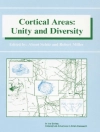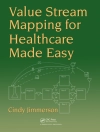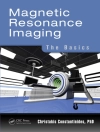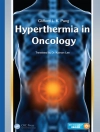Update includes content to help students complete the DNP Project!
Now in its third edition, this bestselling text is a concise, step-by-step proposal writing guide that has helped thousands of students produce quality project proposals. For the first time, this new edition includes content to help students move beyond the proposal phase. Two new chapters will help students complete the DNP Project and create the final report.
The third edition is extensively revised with new information about ongoing clinical scholarship opportunities and an Instructor’s Manual full of suggestions to engage students and help them progress through this demanding process. This edition continues the ‘Advice from DNP Students segment, ‘ along with new tips for getting started, introductory objectives and final summary points in each chapter to help students hone their skills.
New to the Third Edition:
- Delivers two completely new chapters on Finalizing Your Proposal and Project:
- Moving Your Project Proposal to Completed Project
- Moving your Project to Written Final Report
- Instructor’s Manual that includes chapter objectives, overviews, questions and teaching tips to consider, and student activities, all designed to help the student progress.
Key Features:
- Student checklists
- Examples of successful Quality Improvement projects
- Sample Proposal Abstracts
- Unique Project Triangle to provide structure to student work
- Interactive exercises to keep students engaged, including reflective questions, writing prompts, and self-assessments
- Sample ‘student problems and resolutions’ boxes to help students deal effectively with roadblocks
- And much more!
Table of Content
Section I: Writing Your Proposal: Putting Your “Problem” in Context
Chapter 1. Introduction: Why a Scholarly Proposal for the Clinical Project Proposal?
Chapter 2. Using the Writing Plan as a Developmental Tool for the Advanced Clinical Project
Chapter 3. Writing a Good Clinical Problem Statement and Placing the Clinical Problem in Context
Chapter 4. Clinical Projects and Quality Improvement: Thinking Big Picture
Chapter 5. Into the Literature: Gaining Best Evidence and Relevant Literature
Chapter 6. Synthesizing Best Evidence and Literature Review
Chapter 7. Framing the Advanced Clinical Project with Relevant Clinical Frameworks
Section II: Writing Your Proposal: Designing and Setting the Stage for Your Project
Chapter 8. Addressing Outcomes Evaluation in the Advanced Clinical Project Proposal
Chapter 9. Guiding the Advanced Clinical Project: The Purpose of a Purpose Statement
Chapter 10. Mapping It Out, From Problem to Advanced Clinical Project Plan
Chapter 11. Writing the Methods Section: Organizing the Advanced Clinical Project Proposal
Chapter 12. Gaining Credible Clinical Project Data: Being Systematic and Objective
Section III: Writing Your Proposal: Adding the Detail for Proposal Completion
Chapter 13. Writing the Data-Analysis Plans for Advanced Clinical Projects
Chapter 14. Keeping Clinical Projects Ethical and Dependable
Chapter 15. Finalizing the Proposal as a Professional Document: Reviewing, Editing, and Revising
Section IV: Finalizing Your Proposal and Project: Next Steps
Chapter 16. Moving Your Project Proposal to Completed Project
Chapter 17. Moving your Project to Written Final Report
Chapter 18. Moving your Completed Project to Dissemination and Further Scholarship
About the author
Katharine V. Smith, Ph D, RN, is associate professor emeritus at the University of Missouri Kansas City School of Nursing and Health Studies. Dr. Smith has received multiple grants, most of which have focused on aspects of teaching, advanced education, and nursing traineeships. Recent scholarship includes peer viewed publications and national presentations on the use of simulation to teach legal and ethical content. She has also coauthored the textbook Teaching Technologies in Nursing and the Health Professions (2019). Dr. Smith has taught in both undergraduate and graduate nursing programs, facilitating advanced clinical projects through the early conceptual phases.












